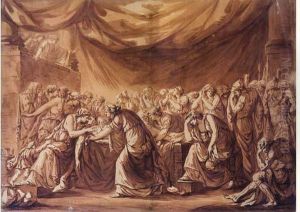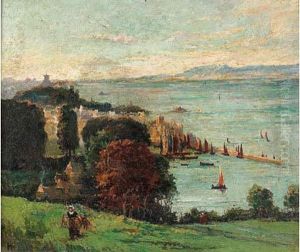Alexandre Charles Masson Paintings
Alexandre Charles Masson, born in 1773, was a notable figure in the world of French engraving and medal-making during the late 18th and early 19th centuries. His career spanned a period of significant political and artistic upheaval, witnessing the transition from the Ancien Régime through the French Revolution, the Napoleonic era, and into the Restoration period. Masson's work is characterized by its technical proficiency, artistic sensitivity, and the ability to capture the zeitgeist of his tumultuous times.
Masson was trained in the classical tradition of engraving, which emphasized meticulous attention to detail and a deep understanding of both the artistic and historical significance of his subjects. He excelled in the art of medal-making, a field that required not only artistic skill but also a precise technique in the crafting and casting of medals. His medals often commemorated significant events and figures of his era, serving as both works of art and historical documents.
Throughout his career, Alexandre Charles Masson contributed significantly to the preservation of French cultural and historical heritage. His works were not merely ornamental but were imbued with a sense of purpose and permanence, intended to convey the ideals and achievements of his time to future generations. Despite the challenges posed by the political upheavals of his day, Masson maintained a steady output of high-quality work, earning the respect of his contemporaries and the admiration of later art historians.
Masson's legacy lies not only in his artistic output but also in his influence on the development of engraving and medal-making as respected forms of artistic expression. His dedication to his craft and his ability to adapt to the changing tastes and technologies of his time ensured that his work remained relevant and appreciated long after his death in 1856. Today, Alexandre Charles Masson is remembered as a master of his art, whose works continue to be studied and admired for their beauty, craftsmanship, and historical significance.

